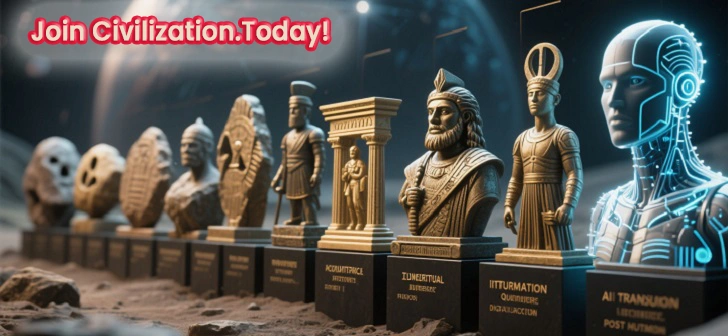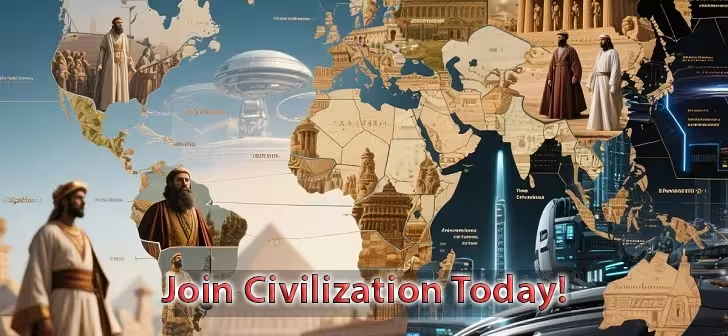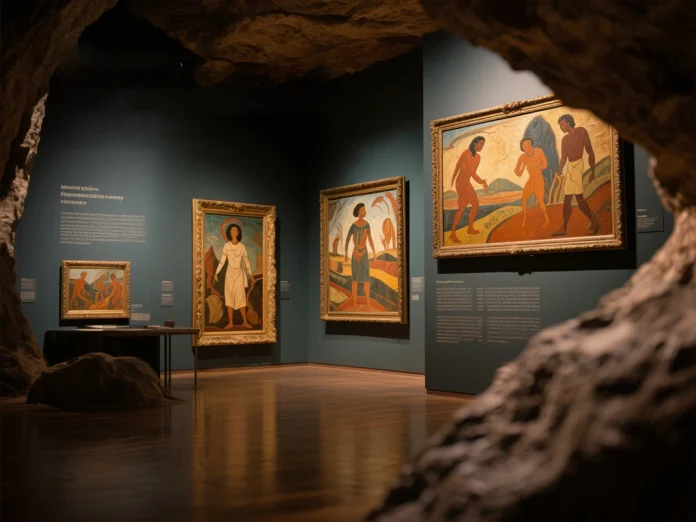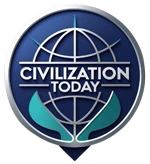Art has always been more than decoration. It is the silent storyteller of our past, a universal language that transcends words and unites humanity across time, geography, and culture. From the moment ancient humans left their first handprints on cave walls to the explosion of digital creativity in the modern world, art in human civilization has played a pivotal role in shaping identities, preserving history, and inspiring innovation.
In this article, we will explore how art became a mirror of society, a tool of communication, and a timeless thread connecting all civilizations.
The Origins of Art: Humanity’s First Voice
Long before written language existed, early humans turned to art to express themselves. Archaeological discoveries of cave paintings in Lascaux, France, and Sulawesi, Indonesia, show that prehistoric people used pigments and carvings to record hunts, rituals, and daily life.
These weren’t just random drawings—they were visual narratives, spiritual symbols, and perhaps even tools for teaching survival skills. Art provided the first evidence of human imagination, creativity, and the ability to symbolize ideas. In many ways, it was the birth of culture itself.
The earliest art proved that even without spoken language, humans had an innate need to communicate and connect. This is why art is often described as the first universal language in human civilization.
Art as a Cultural Identity
As civilizations rose, art became the soul of culture. Ancient Egypt used monumental art—pyramids, temples, and hieroglyphics—to express religious beliefs and political power. In Greece, sculpture embodied ideals of beauty and human perfection, while in India, intricate temple carvings told stories of gods, devotion, and morality.
Each society used art not only to decorate but also to establish identity and legacy. The styles, symbols, and techniques became cultural signatures, distinguishing one civilization from another.
At the same time, trade and exploration spread artistic ideas across borders. The Silk Road carried not only spices and silk but also artistic influences—from Chinese ceramics to Persian textiles—showing how art in human civilization also worked as a cultural bridge.
Art as a Tool of Communication
What makes art universal is its ability to speak without words. A painting, a dance, or a melody can stir emotions in ways language cannot. A sculpture of grief can move people from any culture, even if they don’t share the same tongue.
For instance, Michelangelo’s frescoes in the Sistine Chapel continue to inspire awe, centuries after they were painted. Similarly, traditional shadow puppetry in Southeast Asia tells stories that captivate audiences even today.
In both cases, art serves as a bridge of understanding. This communicative power allowed leaders, religions, and movements throughout history to spread messages far more effectively than through words alone.
Art as Resistance and Revolution
Art in human civilization has not always been about beauty and harmony—it has also been a tool of resistance. During times of oppression, art became the voice of the voiceless.
- In the 20th century, Picasso’s Guernica depicted the horrors of war and stood as a powerful anti-war statement.
- Protest songs fueled the civil rights movement in the United States.
- Street art and graffiti in modern cities often carry messages of political dissent and social justice.
These examples show that art is not passive; it actively shapes society by challenging authority, questioning norms, and inspiring change.
The Evolution of Art: From Tradition to Technology
Art in human civilization has constantly evolved alongside technology. Once limited to stone, pigment, and canvas, today art has expanded into digital forms. Photography, cinema, and digital design revolutionized the creative landscape, allowing new ways of storytelling and expression.
Modern technologies like AI-generated art, NFTs, and virtual reality are pushing the boundaries even further. While some debate whether digital art holds the same authenticity as traditional forms, there is no denying that art continues to adapt with civilization’s progress.
Yet, even with all these changes, the essence remains the same: art is still a medium for human connection and imagination.
Why Art Matters in Civilization
Throughout history, civilizations have been judged not only by their wars or rulers but also by their art. The paintings, sculptures, and architecture left behind are often the clearest window into how people lived, what they believed, and what they valued.
Art in human civilization has always:
- Preserved History. Ancient murals, manuscripts, and architecture serve as time capsules.
- United Communities. Festivals, performances, and rituals foster shared identity.
- Inspired Innovation. Art encourages imagination, which leads to progress in science, philosophy, and technology.
Even today, when societies face crises, art emerges as a form of healing, resilience, and hope.
The Timeless Power of Art
What makes art truly universal is its timelessness. A 30,000-year-old cave painting and a modern digital artwork may look different, but both spring from the same human need—to express, to connect, to leave a mark.
Art in human civilization will always be more than aesthetics. It is the emotional DNA of humanity, binding past, present, and future.
As long as humans exist, art will remain the silent yet powerful language that unites us all.
Conclusion
From ancient carvings to futuristic digital art, the story of humanity cannot be told without art. It reflects our fears, dreams, struggles, and triumphs. It is both personal and universal, fragile yet enduring.
When historians of the future look back at our era, they may not only examine our politics or wars but also our music, films, paintings, and digital creations. Because ultimately, art in human civilization is not just a record of who we were—it is proof of who we are.




